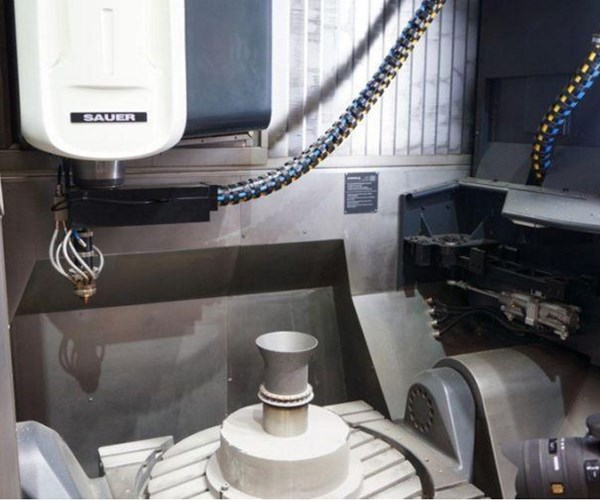Additive + Subtractive Won’t Need Further CNC Advances
Today’s control technology is ready for these machines, and for more challenging integrations than this.
Share








Hwacheon Machinery America, Inc.
Featured Content
View More


A machine such as this one, which combines additive manufacturing with subtractive machining through five axes of motion, can be controlled using today’s existing CNC technology.
So-called “hybrid” machine tools, which combine additive manufacturing with CNC machining, might prove to be the most effective way for many manufacturers to implement additive manufacturing. The adoption and development of these machines is liable to advance. But even so, CNC technology will not have to race to keep up, says Randy Pearson, international business development manager for Siemens. He points out that existing, standard CNCs have been implemented on hybrid machines today. This level of control technology is up to the task of running the multi-process machines, he says.
Indeed, more challenging unions have already been achieved. Siemens has demonstrated a machine tool and robot under the coordinated control of a single CNC. Part of the challenge in this is that the robot and machine tool obey different command languages. Uniting metal cutting with additive manufacturing does not feature this challenge, he says, because the additive process uses just a modified set of codes within the language of the machine tool. Seen in this light, additive is a natural function for the machine tool to take on, and the control is ready for this addition.
Pearson says, “Whether the parameters involve laser gases, powdered metal deposition and inert atmosphere vacuum or five-axis rotation of a milling head or rotary table, the function of the control remains nearly identical. In this way, a single control can run two varying technologies for fabrication and chip cutting, either on a single channel or on a two-channel unit.”
And as previous successes have shown, he adds, those two technologies could even be used in tandem with a robot. Indeed, the company has come very close to this in a recent partnership that has developed an 8-axis robotic system for 3D printing with composites.
Related Content
-
Tips for Designing CNC Programs That Help Operators
The way a G-code program is formatted directly affects the productivity of the CNC people who use them. Design CNC programs that make CNC setup people and operators’ jobs easier.
-
Computer Programming-Related Features of Custom Macro
Custom macro is an interpreter-based language, meaning that all CNC G code and custom macro commands are executed as the CNC comes across them.
-
Five-Axis Machines Speed NASCAR Engine Production
Moving from an aging set of five-axis mills to more advanced machines enabled Hendrick Motorsports to dramatically improve its engine production.


































